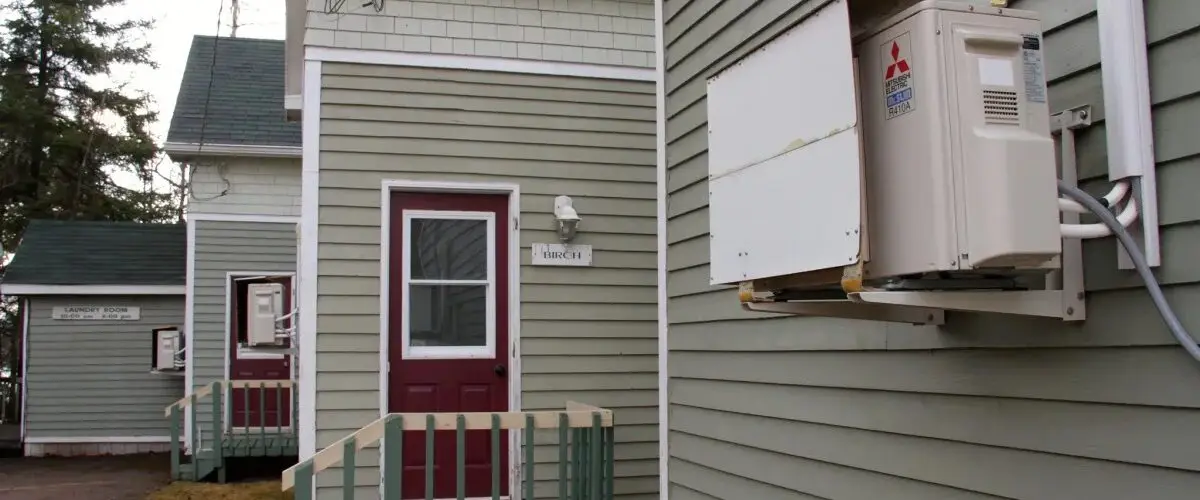Maine energy efficiency plan puts priority on equity, electrification
Maine’s utility regulators have approved the state’s latest three-year energy efficiency plan, a set of programs and incentives that environmental and community advocates say will make it easier for low-income and rural residents to weatherize their homes and access electric vehicle chargers.
The plan substantially increases funding for programs serving low- and moderate-income households, continues efforts to expand electric vehicle charging infrastructure into more sparsely populated areas, and builds upon the state’s already nation-leading heat pump incentives. In total, the plan calls for spending just under $300 million over three years and projects a lifetime benefit totaling $1.5 billion for the state, in addition to the environmental gains it is expected to produce.
“We think that these benefits extend beyond the economic savings to include really important progress with carbon reductions and improving our energy independence, which has never been more important,” said Michael Stoddard, executive director of the Efficiency Maine Trust, the quasi-governmental agency that administers the bulk of the state’s efficiency programs.
Efficiency Maine puts out a new plan every three years, outlining its intended goals, spending, and programs. The newly approved plan, called Triennial Plan V, covers the years 2023 to 2025 and has been widely praised.
“This is a wonderful plan,” said Jeff Marks, Maine director for climate and energy nonprofit the Acadia Center. “This gets at a lot of the priorities in Maine.”
In recent years, Maine has made some ambitious climate commitments. In 2019, a new law set a goal of having 100,000 electric heat pumps installed in Maine by 2025, a target the state is well on the way to reaching. That same year, Gov. Janet Mills set a goal to make the state carbon-neutral by 2045. And, at the end of 2020, the state released Maine Won’t Wait, a comprehensive climate action plan that lays out a roadmap for reaching the state’s goal of cutting greenhouse gas emissions by 80% by 2050.
At the same time, this new plan arrives at a moment when Maine is increasingly feeling the strain of rising energy prices. At the beginning of the year, prices for electric supply went up between 83% and 89% for customers of Maine’s major electric utilities. More than 60% of homes in the state use heating oil for home heating, and prices for that fuel have more than doubled since the same time last year.
“We saw the family impacts of fossil fuel volatility really strike home this winter,” said Jack Shapiro, climate and clean energy director for the Natural Resources Council of Maine.
The plan’s strong focus on making cost-saving measures available to lower-income and rural residents is therefore especially welcome, advocates said.
The plan calls for spending some $33.2 million on services directed to low- and moderate-income households, an increase of more than 40% over the amount budgeted in the previous three-year plan. Much of this growth comes thanks to money from the American Rescue Plan Act, the federal COVID-response bill. This infusion of federal money will allow a sixfold increase in spending on weatherization services for households in the target group.
To scale up these services effectively, Efficiency Maine will in many cases conduct outreach directly to eligible households, help homeowners select the right products for their needs, and coordinate with vendors for installation.
This strategy is key for reaching some of Maine’s more isolated communities, said Suzanne McDonald, chief community development officer for the Island Institute, a nonprofit that supports island and coastal communities in Maine. Residents of rural areas may have a difficult time finding qualified contractors who are local or willing to drive or fly to remote towns or island communities. The direct outreach model can help overcome those barriers, she said.
Another $6.8 million will be directed into electric vehicle initiatives. The plan will continue to fund point-of-sale electric vehicle rebates — $2,000 for a new battery-electric car, $5,500 for a new car purchased by a low-income buyer, and $2,500 for a used vehicle for a low-income household. The plan also calls for the deployment of more charging infrastructure in rural parts of the state where opportunities to charge up are few and far between.
“What makes this plan feel like it’s made in Maine, for Maine is that it has a real commitment to equity in terms of income equity and geographic equity,” McDonald said.
Another $57.7 million — a 33% increase over the previous plan — is budgeted to accommodate expected increased activity in home energy savings programs, centered largely on weatherization and heat pump installation. And $86.8 million is allocated to commercial and industrial programs, including education about and incentives for energy-efficient heating and cooling, ventilation, and lighting systems.
While environmental and community advocates had strong praise for the new plan, they have started to think about strategies for even better serving Mainers and cutting energy use next time around. Particularly, many activists would like to see a focus on whole-home retrofits, considering heating, appliances, and weatherization as a system.
“If we can somehow incentivize whole-home packages, we will be able to make those improvements better and stronger,” Marks said.
As a whole, the plan provides a model other states should take note of, said Erin Cosgrove, public policy manager for the nonprofit Northeast Energy Efficiency Partnerships. Most notably, Maine’s heat pump program is charging ahead, she said, while other states in the region are still conducting pilot programs.
“They’re leading the way as we look at transitioning into electrification,” Cosgrove said. “Maine is really a shining example.”
Read the full article in Energy News Network here.




















Follow us